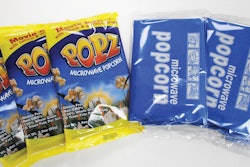Both of you served as trainers for a recent AAMI (Assn. for the Advancement of Medical Instrumentation) University webinar entitled, “Packaging for Terminally Sterilized Medical Devices: How to Find Your Way in this Globally Regulated Industry.” What is going on in the medical device community, and how do standards and regulations play a role in this industry?
John Spitzley: Curt and I find that standards on terminally sterilized medical devices haven’t changed as much as have the people entering the medical device business who need training and awareness on the ISO 11607 standards (see sidebar below). There's been considerable turnover among packaging engineers and people who are assigned to packaging within medical device companies. Even in just the last couple of years, we find more people really don't understand that key standard and what it's all about.
Curt Larsen: First, for those who didn’t attend the AAMI webinar, you can purchase and download the two-part workshop at http://university.aami.org/diweb/catalog/item/id/1088296
To John’s point, new professionals need to become trained and understand the requirements of the ISO standard. They need to become active in the learning process and understand what the different test methods are all about. It's much more than just, "Oh, we've got this new device so we need to go down to ‘ACME Pouch Store’ and buy a bag, and boxes are free behind Target.” We see that sort of mentality. We were just talking with a consultant who was in the webinar who has trouble convincing some of his customers that they even need to pay attention to the global standard. Some have never heard of it.
ISO 11607 is a global harmonized standard, required of companies that are going to sell in the European community. You must meet all the “shall statements” in both parts 1 and 2. If you don't, then you're in violation.
Could some companies take the approach that the punishment for violating these statements isn’t severe enough to make it worth the financial investment necessary to comply?
Larsen: You've got that right on point. We see that here in the U.S. where the little guys can fly under the radar. The FDA doesn't have the time to go check every “mom and pop” shop. Some of the companies may never get involved with a notified body and never go through their audits. The big guys with the deep pockets are the ones that the agency looks at because they know they can get more money out of them. So the issue to me is simply the possibility that a compromised sterile barrier system results in product contamination.
What are the more recent ISO 11607 changes?
Larsen: There is a ballot being prepared with a list of changes that have been brought to the ISO committee from different member countries, including the U.S., the convener for the global Working Group 7, packaging. I don't agree with all of these changes and have a real issue with several of them in that they're going to be costly and affect the bottom line of the costs of goods sold and for customers who pay for it.
For some who may not understand, explain what terminally sterilized medical devices are and their significance?
Larsen: Terminally sterilized medical devices simply refers to a device sterilized inside of a package. The packaging system must be designed to maintain the sterility of the device(s) inside, whether the packaging is flexible or rigid. The system could also be a sterile fluid path product such as a tubing set or a fluid drip bag. In those situations, the outside doesn’t need to be sterile, but you need to maintain sterility inside of the device.
Spitzley: It could be a container or reusable system or a kit with multiple products or devices. They’re all covered in the standard. Sometimes these systems are sent out in combination with other products and the entire order is placed in a corrugated shipper. For higher-volume devices, sterilization could be done in pallet-load quantities.
Larsen: With low-volume, high-margin products such as an artificial heart or a joint replacement, you might not make a pallet load in a year.
You can sterilize different products at the same time? Don’t some products have different sterilization time requirements or different sterilization methods?
Spitzley: Contract sterilization companies may run a "standard" load that includes a lot of different packaging systems if they’re all compatible.
Larsen: The idea is to maximize the use of your sterilization vessels so you can mix and match different packaged products that use the same sterilization method. Certainly some products do require different sterilization times. If you've got your own sterilization processing equipment in-house, then you'll optimize that and you'll validate your sterilization process to minimize that exposure time.
One of ongoing debates for medical device packaging testing continues to be the appropriate number of package samples required to satisfy existing global standards. Can you shed some light on this topic?
Larsen: What we run into in packaging is the total misunderstanding of what a sample is. Regulations and standards advise testing a packaging system to make sure that it's adequate for use. Your packaging system is what you would send out the door into interstate commerce. It must be “adequate for use” and work where it needs to work, and the sterile barrier system cannot be damaged. That's what you do with your design and performance qualification testing.
People can mistakenly interpret that to mean that with a box that has 10 sterile barrier systems or devices in it equates to a sample size of 10. No, they have a sample size of one. The standard is very clear that you're testing and qualifying the performance of a packaging system. A lot of people don't have that appreciation. One of the companies we’re working with now realizes that to do this right is going to cost them a lot of time and money. It’s also the last thing the FDA wants to hear. You either meet the requirements or you don't.
Spitzley: As consultants, we can only consult. We can recommend and strongly suggest, but ultimately, it's a client’s decision. The one thing that usually gets their attention is when we tell them, "Let's say you have three of those 10-packs.” They've counted their sample size as 30, but per this description, their sample size is really three and some sharp regulatory investigator is going to say that. We ask the client, “Are you prepared to defend that?” That's where the rubber meets the road.
Larsen: John touched on another matter that’s really important. There aren't that many sharp auditors out there. It goes right over their heads. There is turnover and new people there as well.
What do people need to know about the downloadable AAMI webinar?
Larsen: If you don't understand the nuances of ISO 11607, how it works and all the details about testing and the approximately 130 shall statements, then you need to become better educated. People need to know the difference between the “shalls” and the “shoulds” or “coulds.” There are suggestions in there that you don't need to follow, but for the cases where you’re supposed to do something, you better do it.
Spitzley: I think there's a very simple question that any company of any size, but particularly the mid-sized to the small startups could ask of any and all people in the company that are responsible for packaging: Do they know and understand the requirements of ISO 11607? If they don’t, then it's time to visit the webinar.
One of the sections of the webinar that’s especially important for people new to the medical packaging arena is a slide called “Self-Inflicted Wounds.” This conveys examples of situations where companies find themselves in trouble because they ignored or totally misunderstood the requirements of the standard. And, we didn’t just fabricate them. They are all based on actual situations that we have encountered over the years. If they don't look at anything else, they should look at that.
[ISO sidebar]
ISO 11607-1:2006/(R) 2010 Packaging for terminally sterilized medical devices—Part 1: Requirements for materials, sterile barrier systems, and packaging systems and ISO 11607-1: 2006/A1: 2014 Packaging for terminally sterilized medical devices-Part 1: Requirements for materials, sterile barrier systems, and packaging, Amendment 1.
ISO 11607-2:2006/(R) 2010 Packaging for terminally sterilized medical devices—Part 2: Validation requirements for forming, sealing and assembly processes and ISO 11607-2: 2006/A1: 2014 Packaging for terminally sterilized medical devices-Part 2: Validation requirements for forming, sealing, and assembly processes, Amendment 1.


























